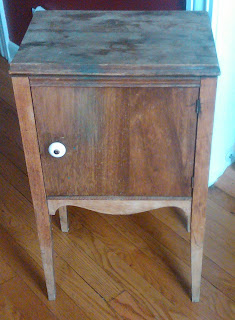Once again I found myself motivated by something I saw on Pinterest . . . I am totally loving that site! If you aren't already a member I highly suggest you get started, it is a great place to find inspiration. In any case, I had seen someone who had posted a picture of children lounging on these awesome mattresses that appeared to be made of bed pillows. I knew I wanted it for my own son but I wanted to adjust it to have more boyish fabrics.
After a night of planning and 2 nights of sewing, this is what I came up with!
Keep reading to find out how you can make your own . . . of course, if you love the pillow mattress but don't sew or just would prefer to purchase it, please feel free to contact me at seamssewprecious@gmail.com about purchasing one! I love to create custom items!
I am providing this tutorial for personal use . . . please feel free to use my pattern for gifting or for your own use. This is not to be used to create items for sale.
---------------------------------------------------------------------------
Supplies:
- Poster board, cardboard, or other large piece of thicker paper
- 1 yard solid cotton fabric (turquoise for front)
- 2 yards solid cotton fabric (gray for back)
- 1 yard cotton fabric with print (guitars for front)
- Coordinating thread
- 4 Pillows
---------------------------------------------------------------------------
Start off by creating a pattern for the front of the mattress. I took some posterboard and cut it to be 28 inches by 20 inches.
Use your pattern to cut 4 pieces of fabric, in my case I cut 2 of my cotton guitar print and 2 of my coordinating solid (turquoise).
I then took my other solid cotton fabric (gray) and cut 2 pieces measuring 20 inches by 60 inches. I wanted the top of my back to match the top of the mattress (if you want your entire back to be solid you would cut a piece measuring 20 inches by 80 inches). I then took my cotton print and cut two pieces measuring 20 inches by 20 inches. At this point I suggest ironing all of your pieces to be nice and flat. If you want to personalize your mattress now would be the time to embroider. I embroidered one of the turquoise rectangles with black font exactly in the middle.
Pin 2 of your front rectangles together on one long side, right sides together and sew a seam.
(P.S. Sorry for the cluttered pics . . . this was worked on in my living room amidst toys and other items)
Repeat above step for the remaining front pieces until all 4 are sewn together forming 1 long piece. If you are using 2 different fabrics for the back, as I did, then pin one of the 20 inch by 60 inch pieces to a 20 inch by 20 inch piece, once again right sides together (if you are using one color on the back then skip this step). Sew together and repeat for the other piece.
Take your now 20 inch by 80 inch pieces and create a hem along one of the long sides. Be sure to do opposite sides (i.e. one piece will have a hem on the right and one will have a hem on the left).
Take one of your 20 inch by 80 inch pieces and pin the unfinished edge along an edge of the front of your mattress with right sides together. Sew around the 3 edges.
Repeat this step with your remaining 20 inch by 80 inch piece. Your seams along the shorter ends will overlap with the previous piece.
Flip everything to be right side out. Smooth everything out and pin along front seams to hold back fabric smoothly in place. Sew seams along front seams, forming 4 individual pillow cases in the process.
Now you are ready to "stuff" your mattress. I bought 4 very cheap ($2.50 each) standard pillows from Wal-Mart.
For my under 1 year old these pillows will be perfect for getting spit up on, leaked on, and any other accidents that may occur before he is even long enough to fill this mattress out. If this is for an older child I suggest stuffing with a better pillow. These proved to be very thin when my husband and I sat with him on the mattress tonight. I will be keeping my eyes out for some fluffier clearance pillows in the future!
Voila . . . a fabulous pillow mattress! Perfect for road trips, sleepovers and lounging around for movie nights! Even better for mom since you can disassemble as needed for easy washing! ;)
(Fold top pillow under to create a little headrest when watching t.v.)
Pin It


















































